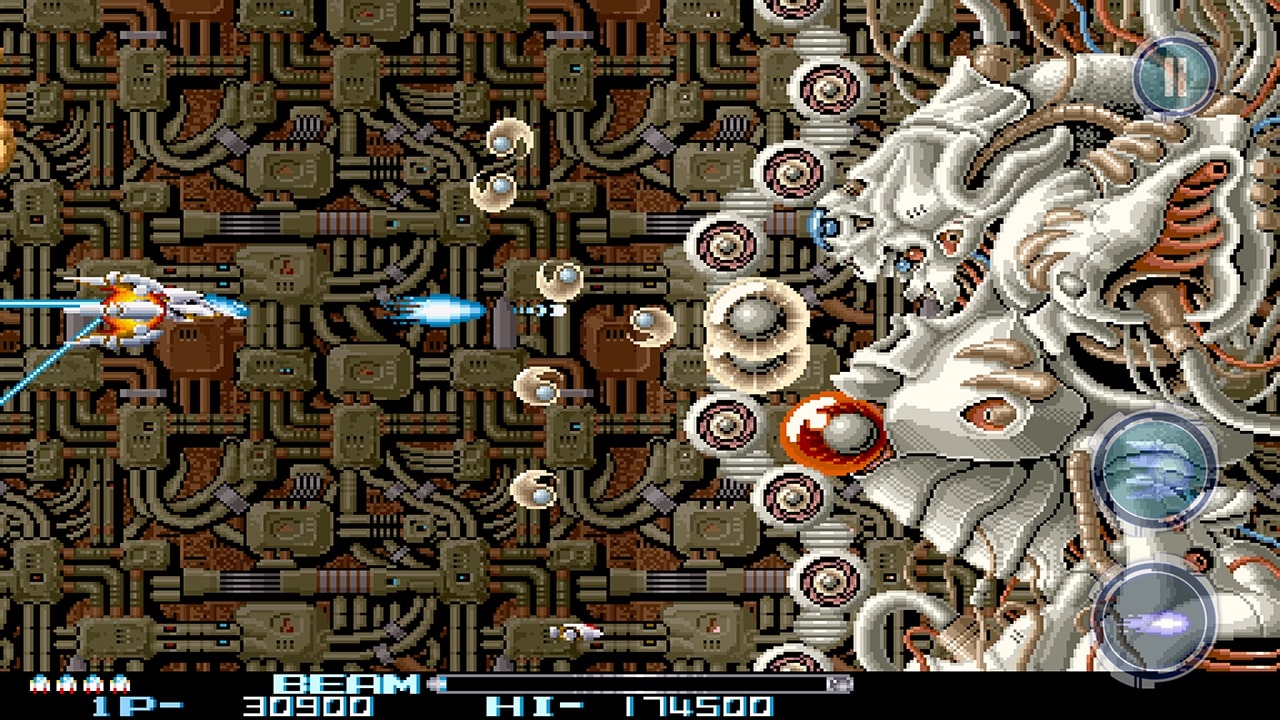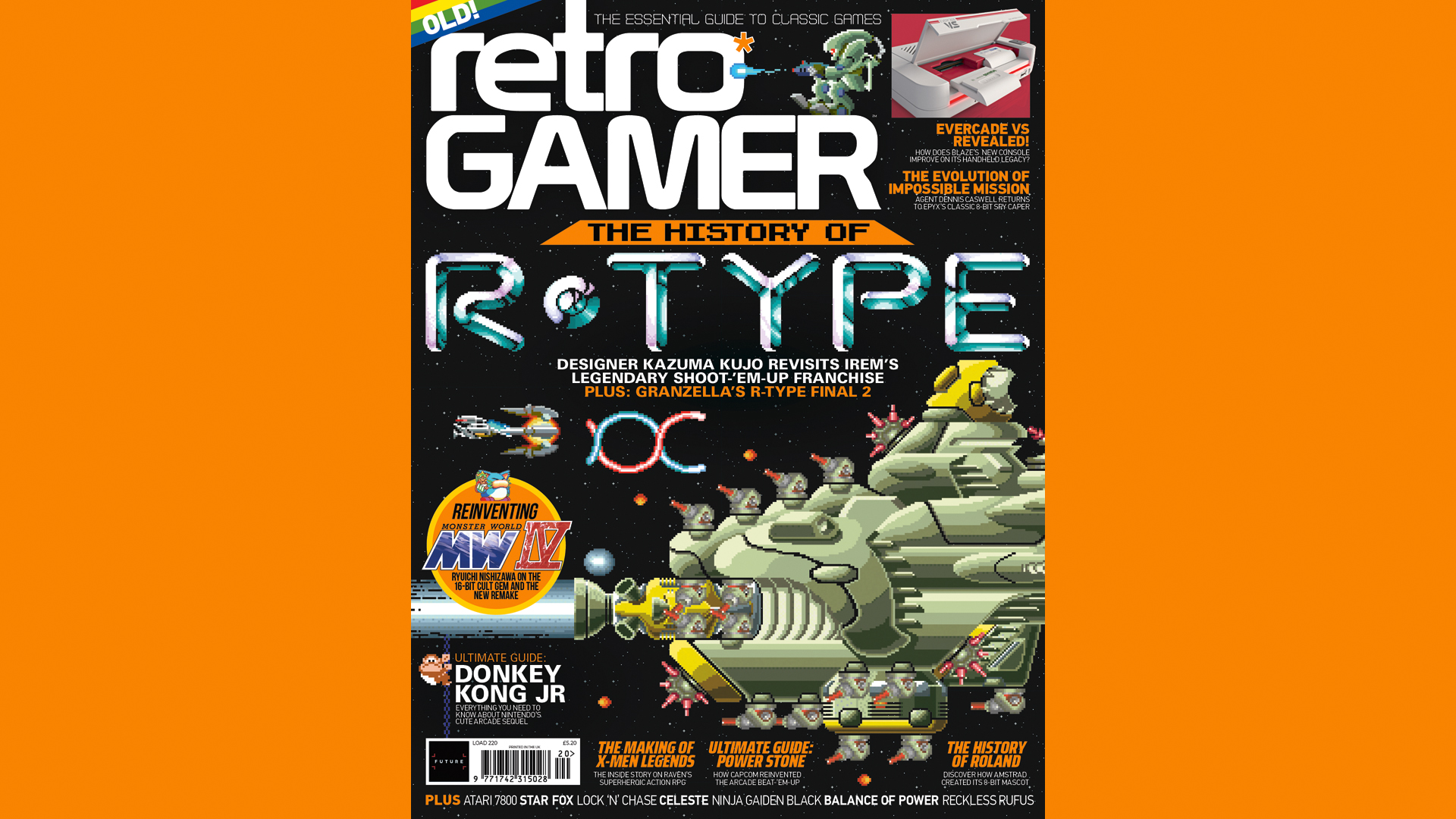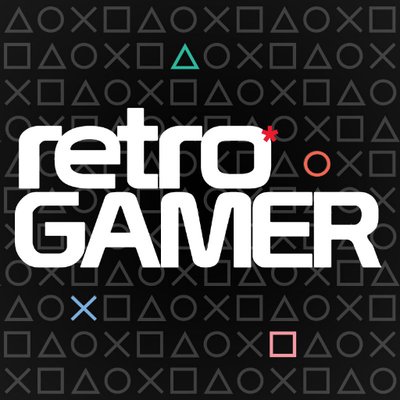Looking back at R-Type 2, the arcade sequel that struggled to escape the shadow of its own legacy
Retro Gamer charts developer Irem's difficulties in following up on its arcade mega hit

The sequel to R-Type arrived in December 1989, two-and-a-half years after the original game. This gap between games seems perfectly reasonable these days, but back then there was genuine surprise that Irem waited so long to follow up its biggest hit. 30 months was almost an aeon in arcade terms and more than one commenter referred to R-Type II as 'long-awaited'.
So expectations were genuinely high, especially as the passage of time suggested that the sequel would benefit from hardware advances that had been made in the interim. It was deflating, then, to discover that R-Type II was very much a case of 'R-Type Too'.
"On first sight it's rather disappointing," wrote Matt Bielby in his Your Sinclair Slots of Fun column. "The controls, the look and the weapon pick-ups are identical to those in the first game. Playing it is like winding the clock back a couple of years." These criticisms were shared by other publications. "R-Type II can be seen as another six levels of the original," wrote Commodore User magazine. "The designers haven't even bothered to give it the facility of simultaneous two-player action."


If you want in-depth features on classic video games delivered straight to your doorstop, subscribe to Retro Gamer today, and follow this link for more information on the latest issue of the mag.
No, Irem didn't 'do a Salamander' and add co-op play. In fact, it actually dialed down some elements for the sequel. Most noticeably there were just six stages compared to the original's eight. What's more, some of the new stages were overly familiar to R-Type fans, particularly the first stage which was a re-run of the original's opener, right down to having the same boss (albeit in a new, enhanced form).
Bizarrely the second stage, which took place inside a partially submerged cave and introduced various aquatic enemies, was a real showstopper that should have figured first. The R-9 ship also returned and was visually alike, although this was actually a custom version (the R-9C) that benefited from an upgraded plasma cannon.
If you held down the fire button the beam would charge up for the regular plasma beam, like before, but if you continued to hold fire it would charge a second time to produce a devastating plasma wave that blazed across the screen. This was cool, for sure, but it took so long to charge, and the window for using it was so small, that it served little practical use when playing.
The 'Force' power-up returned and its operation was unchanged, although there were also some new weapons available for it. The power-ups from the original were retained and they were bolstered by two additions: the shotgun, which discharged a small explosive charge, and the homing laser, which attempted to target nearby enemies.
Weekly digests, tales from the communities you love, and more

A second missile option was also introduced which produced a scatter bomb effect. While it was nice to have new toys to blow stuff up with, they were largely a missed opportunity and it's safe to say that most players kept faith with the effective arsenal from the original. Performance-wise there was little improvement over R-Type, which ran on Irem's M72 hardware. The sequel was provided in kit form and powered by the newer M82 board, but the guts were the same (chiefly the 16-bit NEC V30 processor) so differences were negligible.
Aesthetically, the sequel was more muted, with fewer of the primary colours that made the original pop off the screen, but this did suit the game's grimy 'organic' visuals. Overall, R-Type II was clearly designed for skilled players who had exhausted the original. Elements were adjusted rather than overhauled and, despite fewer stages, the difficulty level was ramped up to increase the challenge (the final stage featured a relentless assault on the traditional 'safe spot' at the far left of the screen).
As an enhanced, fine-tuned version of the original the game succeeded, and those reviewers that did bemoan the similarities all conceded that R-Type II was a solid, if conservative, sequel (Your Sinclair and Commodore User went on to award it 93% and 86% respectively, while C&VG rated it 92% and called it "a brilliant blast, every bit as good as the original").
Irem played it safe with its key property, but if you wanted a more radical spin on R-Type then you had to look no further than the firm's other shooters Dragon Breed, X-Multiply and Cosmic Cop – or indeed the misconceived second sequel R-Type Leo which followed in 1992.
Conversion capers

R-Type II didn't receive as many home ports as the original. There were no 8-bit computer ports, although a C64 version was mooted at the time. Activision did publish faithful versions for the Amiga and Atari ST, and both were developed by Arc Development which had good form when it came to coin-op conversions. There was also a mightily impressive version for the meagre Game Boy by BITS. For the Super Nintendo Irem chose not to port R-Type II directly and instead made Super R-Type, an enhanced version that added an extra stage at the beginning set in open space. Elsewhere most of the boss encounters were either tweaked or changed completely.
As home versions go, Super R-Type was a generous offering, but it was stymied by the baffling decision to remove mid-stage checkpoints. Forcing players back to the start of the stage when they got hit was far more maddening than the frequent slowdown the plagued the game. Following the release of Super R-Type in 1991, Irem made the sensible decision to start bundling both games together. First up was R-Types which was released for the PlayStation in 1998, ahead of new series entry R-Type Delta. The pack featured arcade-accurate versions of both games plus an FMV sequence. The following year both Game Boy versions were packaged together as R-Type DX for the Game Boy Color.
Here you could play the games in either their original monochrome or new colourised forms, as well as both games back-to- back for 14 stages of continuous Bydo blasting. In 2009 R-Type Dimensions was released, initially for the Xbox 360 and later for the PlayStation 3. Again this featured both games and you could now flick between the original 2D graphics and fancy 3D visuals. The key addition, however, was a co-op mode so you could finally share shooting duties with a fellow fan. More recently, in 2014, a disappointing mobile version of R-Type II was made available for Apple and Android devices. While R-Type II may not have pushed the envelope, it's still a solid and extremely tough blaster.
This feature first appeared in Retro Gamer magazine issue 184. For more excellent features, like the one you've just read, don't forget to subscribe to the print or digital edition at MyFavouriteMagazines.
Retro Gamer is the world's biggest - and longest-running - magazine dedicated to classic games, from ZX Spectrum, to NES and PlayStation. Relaunched in 2005, Retro Gamer has become respected within the industry as the authoritative word on classic gaming, thanks to its passionate and knowledgeable writers, with in-depth interviews of numerous acclaimed veterans, including Shigeru Miyamoto, Yu Suzuki, Peter Molyneux and Trip Hawkins.



